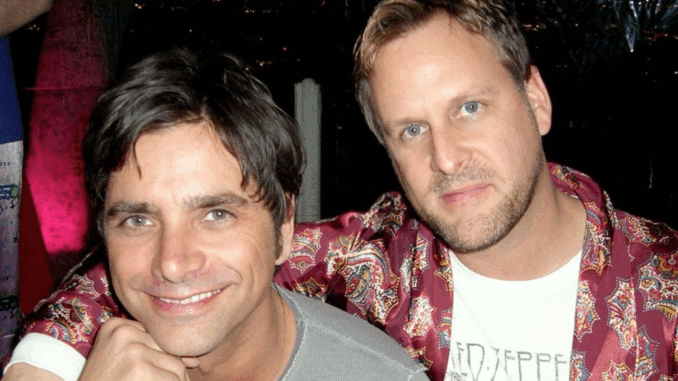
For more than three decades, John Stamos has been one of Hollywood’s most enduring heartthrobs — a man whose charm, humor, and perfect hair seemed untouchable. Yet beneath the image of Uncle Jesse, the effortlessly cool character from Full House, lay years of pain, addiction, and personal reckoning.
In recent years, Stamos has become one of Hollywood’s most candid voices about addiction recovery and the illusion of perfection. His memoir, If You Would Have Told Me (2023), didn’t just tell a story of fame — it examined how self-destruction often hides behind the smiles of the famous.
The Burden of the Golden Boy
John Stamos’ rise to stardom was meteoric. From his early soap opera days on General Hospital to the cultural juggernaut that was Full House, he embodied the dream. But behind the adoration came a hidden weight: the pressure to remain perfect.
“I was taught to smile, to be charming, to never let anyone see the cracks,” Stamos wrote. “But those cracks eventually became canyons.”
In interviews, he has reflected on how the culture of the 1980s and 1990s treated vulnerability as weakness, especially for male celebrities. Fame, he said, “was like an IV drip — it numbed me until I couldn’t feel anything real.”
Marriage, Loss, and a Growing Dependence
Stamos married supermodel and actress Rebecca Romijn in 1998. For a while, they were Hollywood’s golden couple. But as their careers diverged, cracks formed. When their marriage ended in 2005, Stamos spiraled.
“That divorce crushed me,” he later admitted. “I drowned it in alcohol because I didn’t know how to feel it.”
Friends described him during those years as “functioning but fading.” He hid behind charm and humor, working constantly but feeling emotionally hollow. His career never collapsed — but his sense of self did.
“You can be surrounded by love and still feel alone if you don’t love yourself,” Stamos later said.
The 2015 DUI and Hitting Rock Bottom
In June 2015, Stamos was arrested in Beverly Hills for driving under the influence. It was a breaking point. The image of the beloved “Uncle Jesse” in handcuffs shocked fans — and himself.
He was hospitalized that night and later admitted that the incident saved his life.
“I could have killed someone,” he told CBS Sunday Morning. “That’s the moment I realized — either I die this way, or I start living for real.”
The following months were a blur of reflection and detox. He entered rehab, began therapy, and took responsibility for years of denial. The process was neither glamorous nor easy.
“Addiction doesn’t care if you’re famous,” he said in his memoir. “It strips you down until you see what’s left — and for me, that was a man I barely recognized.”
Rebuilding — Brick by Brick
Sobriety became the foundation for his rebirth. Stamos embraced honesty, therapy, and the small rituals of daily accountability. He credited his parents, particularly his late father, with inspiring him to find dignity in humility.
“My dad was the guy who reminded me to show up — for work, for family, for myself,” he wrote.
As he regained stability, Hollywood gave him a second act. He reprised Uncle Jesse in Netflix’s Fuller House (2016–2020), a nostalgic hit that introduced him to a new generation. But this time, he was different — quieter, more grounded.
In 2018, he married actress Caitlin McHugh, and together they welcomed their son, Billy.
“Becoming a dad sober — that’s the real miracle,” he said. “For the first time, I wasn’t performing love. I was living it.”
The Memoir and His Advocacy
In If You Would Have Told Me, Stamos writes with unflinching honesty about addiction, divorce, and grief. Critics praised the book’s self-awareness, noting that he neither glorified his fame nor minimized his mistakes.
“It’s not a redemption story — it’s a human one,” wrote Variety reviewer Meredith Blake. “Stamos offers vulnerability in a culture obsessed with image.”
Today, Stamos works with recovery programs, speaking openly about sobriety and mental health. He uses his platform to destigmatize relapse and emphasize compassion.
“Sobriety didn’t just save me,” he says. “It made me the person my younger self wanted to become.”
Reflections on Fame, Masculinity, and Healing
Stamos’ journey raises broader cultural questions. Why are male stars expected to appear invincible? Why does Hollywood still equate vulnerability with weakness?
Sociologist Dr. Kim Cross notes:
“Stamos’ story is about reclaiming masculinity from performance. He shows that admitting failure is not the opposite of strength — it’s the definition of it.”
In an industry that thrives on reinvention, Stamos’ recovery is not about a comeback. It’s about continuity — choosing consistency over chaos, authenticity over applause.
FAQs
Q1: What addiction did John Stamos struggle with?
Primarily alcohol; he has spoken openly about binge drinking and dependency during his career.
Q2: When did he get sober?
After his 2015 DUI arrest; he has maintained sobriety since.
Q3: Did his career suffer?
Briefly, but he later returned to prominence through Fuller House and his memoir.
Q4: What is his advocacy focus today?
Sobriety awareness, mental health, and redefining masculinity in Hollywood.
Q5: How does he describe his transformation?
As “a shift from perfection to presence.”
